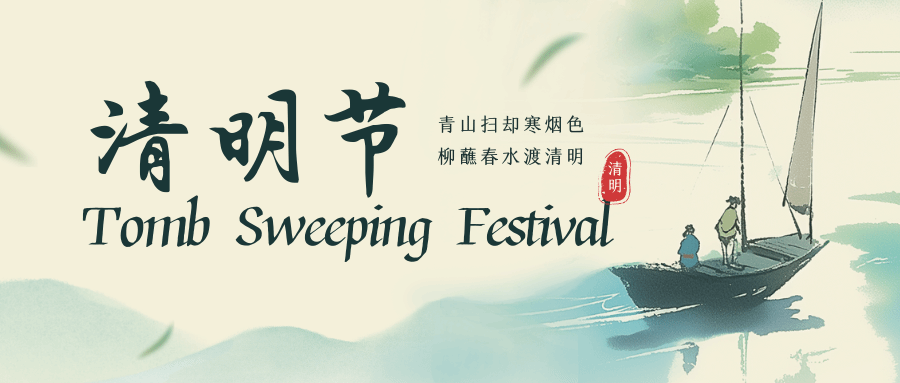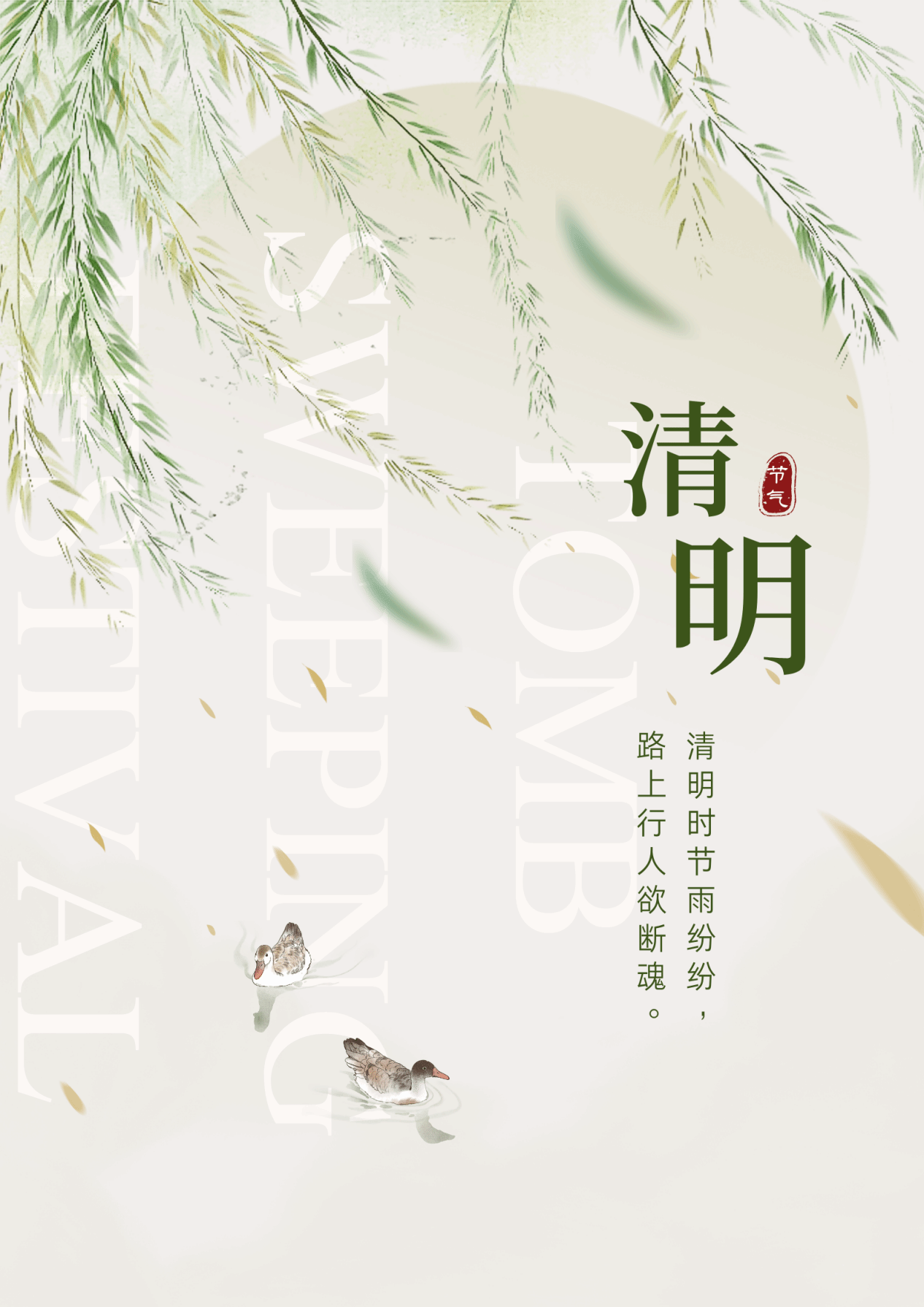Tomb Sweeping Festival, also known as Tomb-Sweeping Day, is one of China’s most culturally significant traditions, observed annually on April 4th or 5th. Rooted in ancient agrarian rituals and Confucian values, this festival embodies the profound Chinese philosophy of honoring ancestors while embracing the vitality of spring. Families gather to clean ancestral graves, offer food and paper offerings, and reflect on their lineage—a practice that bridges the past and present, fostering a deep sense of continuity and gratitude.
清明节,又称扫墓节,是中国最重要的文化传统之一,每年在4月4日或5日举行。这一节日源于古代农耕仪式和儒家价值观,体现了中国人缅怀先祖与拥抱春日生机的深刻哲学。家人齐聚清扫祖坟、供奉食物与纸钱,并追思家族历史——这一传统连接过去与现在,培养着人们对传承的敬畏与感恩。

Tomb Sweeping Festival's roots intertwine with the poignant legend of Jie Zitui, a loyal servant from the Spring and Autumn Period. According to folklore, Jie saved his lord's life by cutting flesh from his own thigh to make soup during a famine. Later, when the lord became a powerful duke, Jie retreated to the mountains with his mother, refusing rewards. To force him out, the duke ordered the forest burned—but Jie and his mother perished in the flames. In remorse, the duke established the Cold Food Festival, banning fires for three days annually to honor Jie's sacrifice. Over centuries, this tradition merged with spring tomb-sweeping rituals, evolving into today's Tomb Sweeping Festival.
清明节的起源与春秋时期忠臣介子推的悲壮传说交织。相传介子推在饥荒中割下大腿肉煮汤救主。后来君主成为晋文公后,介子推携母隐居深山拒不受赏。为逼其出山,晋文公下令烧山,却导致母子葬身火海。晋文公悔恨不已,设立寒食节,每年禁火三日以纪念介子推。历经千年,此传统与春季祭扫习俗融合,演变为今日的清明节。
Beyond its solemn rituals,Tomb Sweeping Festival is also a celebration of nature’s rebirth. Known as the "Pure Brightness Festival," it marks the transition from cold winters to vibrant springs. People venture outdoors to fly kites, picnic under blooming trees, or plant willow branches—a symbol of resilience and life. These activities highlight the festival’s dual essence: mourning the departed with reverence while rejoicing in the cyclical renewal of the Earth.
除了庄重的仪式,清明节也是庆祝自然重生的时刻。作为“清明”节气,它标志着寒冬向盎然春日的过渡。人们外出踏青、在花树下野餐,或插柳祈福——柳枝象征着坚韧与生命。这些活动凸显了节日的双重本质:以敬畏之心哀悼逝者,同时为大地周而复始的新生而欢欣。
Modern observances of Tomb Sweeping Festival reveal its evolving cultural adaptability. Urban dwellers increasingly adopt eco-friendly practices, such as virtual tomb-sweeping or biodegradable offerings, to reduce environmental impact. Meanwhile, younger generations use social media to share family stories, transforming private rituals into collective cultural preservation. This blend of tradition and innovation ensures Tomb Sweeping Festival’s relevance in contemporary society while respecting its historical roots.
现代清明习俗展现了其文化适应力。城市居民越来越多地采用环保方式,如网络祭扫或可降解祭品,以减少环境影响。与此同时,年轻一代通过社交媒体分享家族故事,将私人仪式转化为集体文化传承。这种传统与创新的结合,既尊重历史根基,又确保了清明节在当代社会的生命力。

Globally, Tomb Sweeping Festival offers a window into China’s unique worldview—where ancestors are seen as guardians of moral and spiritual heritage. Unlike Western memorial days focused solely on grief, Tomb Sweeping Festival intertwines sorrow with hope, loss with growth. As Du Mu wrote and Xu Yuanchong translated: “A drizzling rain falls like tears on the Mourning Day; The mourner's heart is going to break on his way.” Yet, this sorrow is softened by the warmth of family bonds and the promise of spring’s vitality, making Tomb Sweeping Festival a timeless ode to life itself.
在全球视野下,清明节为理解中国独特的世界观打开了一扇窗——先祖被视为道德与精神遗产的守护者。与西方单纯强调哀悼的纪念日不同,清明节将哀伤与希望、逝去与成长交织在一起。正如杜牧所写、许渊冲所译的:“清明时节雨纷纷,路上行人欲断魂。”然而,亲情的温暖与春日生机的承诺柔化了这份哀伤,使清明节成为对生命本身永恒的礼赞。
Author: Zhao Xiuran
Date: March 30, 2025

